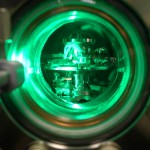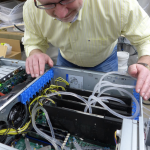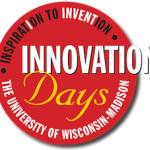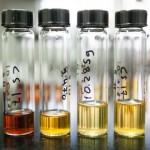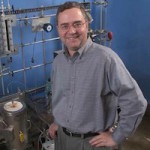Tag College of Engineering
Made-in-Wisconsin atom probe assisted dating of oldest piece of earth
It's a scientific axiom: big claims require extra-solid evidence. So there were skeptics in 2001 when University of Wisconsin–Madison geoscience professor John Valley dated an ancient crystal found in Australia to 4.4 billion years ago. The date, after all, was only 100 million years after Earth started to solidify from a ball of molten rock. Read More
Six appointed to WARF professorships
Six members of the UW–Madison faculty have been appointed to Wisconsin Alumni Research Foundation named professorships in 2014. Read More
Startup focuses on reliable, efficient cooling for computer servers
In a dark, windy room on the top floor of Engineering Hall on the University of Wisconsin–Madison campus, racks of computers are processing information for a college that relies, like all technical fields, on massive computing power. The noise comes from multiple fans located inside each computer case and from the large air conditioner that drives currents through the room to remove waste heat from the processors. Read More
UW-Madison student innovators win Desire 2 Learn grand prize
An idea that began as a homework assignment for two UW–Madison sophomores living in Sellery Hall's Entrepreneurial Residential Learning Community, has since grown into a fully functional, award-winning website that serves hundreds of UW–Madison students. Read More
Stem cell advance yields mature heart muscle cells
A team of University of Wisconsin–Madison researchers has induced human embryonic stem cells (hESC) to differentiate toward pure-population, mature heart muscle cells, or cardiomyocytes. Read More
Vibration energy the secret to self-powered electronics
A multi-university team of engineers has developed what could be a promising solution for charging smartphone batteries on the go - without the need for an electrical cord. Read More
Innovation Days marks 20 years of undergrad entrepreneurship Feb. 13-14
University of Wisconsin–Madison undergraduates are greeting the 20th anniversary of the Innovation Days competition with inventions that range from healthcare to agriculture to exercise for amputees. Read More
Two UW–Madison faculty members named to National Academy of Engineering
The National Academy of Engineering has named two University of Wisconsin–Madison professors to its 2014 class of members. Read More
Renewable chemical ready for biofuels scale-up
Using a plant-derived chemical, University of Wisconsin–Madison researchers have developed a process for creating a concentrated stream of sugars that’s ripe with possibility for biofuels. Read More
A shift in stem cell research
A team of engineers at the University of Wisconsin–Madison has created a process to improve the creation of synthetic neural stem cells for use in central nervous system research. Read More
Online engineering graduate programs third in latest U.S. News rankings
The University of Wisconsin–Madison is ranked third by U.S. News & World Report among schools offering high-quality online graduate engineering programs. This is the third year in a row UW–Madison has ranked in the top ten. Read More
Control theorist Barmish challenges need to model financial markets
B. Ross Barmish hopes his research will build a bridge between control theorists and financial scholars. Barmish, a professor of electrical and computer engineering at UW–Madison, posits that not only are predictive models of financial markets unreliable, but also that stock traders can do without predictive models, simply by applying control theory to the markets. Read More
Wisconsin engineer honored for ongoing innovation
Corn may be a dietary staple for humans and animals around the world, but in Jim Dumesic's eyes, the plant "waste" left after the harvest holds even more potential as a renewable bio-based source of fuels and important chemicals. On Dec. 10, the National Academy of Inventors (NAI) named Dumesic, the Steenbock professor and Michel Boudart professor of chemical and biological engineering at the University of Wisconsin–Madison, among 143 leading innovators elected to its 2013 class of fellows. Read More
Engineers explore ways to understand, outwit blood-brain barrier
MADISON — With support from the New Frontier Science group of Takeda Pharmaceutical Co., University of Wisconsin–Madison engineers are conducting innovative research that could open… Read More
Discovery sheds light on how changes in lungs can hurt the heart
A team of University of Wisconsin–Madison researchers has discovered important biomechanical changes in human arteries that could increase understanding of how pulmonary hypertension leads to heart failure. Read More

